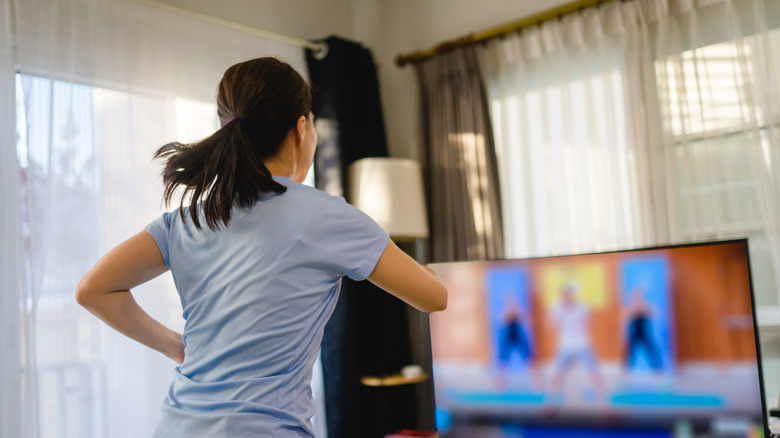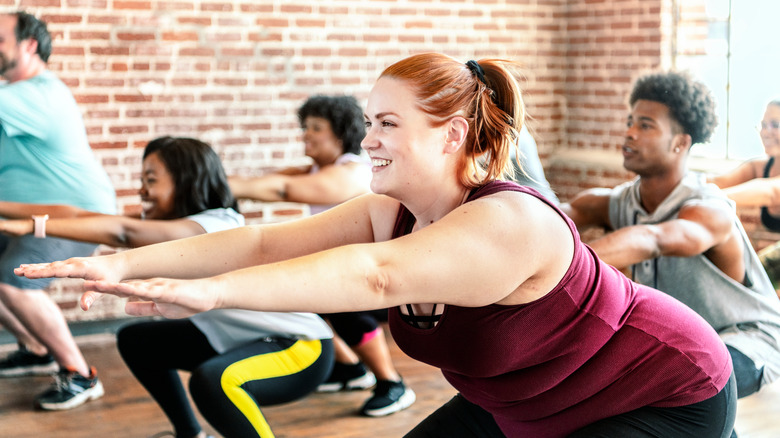What Your Trainer Might Be Getting Wrong About Squats
Squats are generally regarded as essential components to any bodyweight workout routine. They can be done with or without equipment and are easily modified for a seemingly endless number of variations. But no matter how common or essential a move may be, it's possible to approach them in a way that either diminishes their effects or increases the risk of injury. And the squat is no exception.
Livestrong spoke with Melissa Garcia, DPT, CSCS. She is a physical therapist and certified personal trainer working in Seattle. According to Garcia, the most common mistake she sees trainers applying to the squat is insisting that their clients keep their backs as straight as possible, rather than allowing any kind of forward lean. This puts strain on the lower back and increases the risk of the trainer's client sustaining an injury.
This is only the most common mistake, however. There are several other key points to a successful squat that, if performed incorrectly, can have similarly negative effects.
Small details make the difference
Like many familiar exercise moves, the squat is deceptively simple. And while Garcia's biggest concern is the misalignment of a client's back, there are a few other key position points that people should look out for. Bodybuilding specifically focuses on the feet and hips in addition to spine alignment when describing the ideal squat. Rather than pointing the feet straight forward, for example, the site recommends turning the feet out from the heels at a 45-degree angle. And when it comes to actually squatting down, they recommend hinging at the hips rather than bending the back.
It's a position seconded by Garcia. In her Livestrong interview she recommends that people imagine themselves sitting in an invisible chair when they drop into a squat. This keeps the chest in proper alignment and, as Bodybuilding says, hinges the movement at the hips. It is an apt example, as squatting is a natural rest position for humans and used in many cultures around the world according to Nerd Fitness. The site also states that squats are compound movements, meaning that they use multiple joints and muscle groups. A standard squat, for example, uses nearly every muscle in the core and lower body. That's a whole lot of payoff when the move is done correctly.


